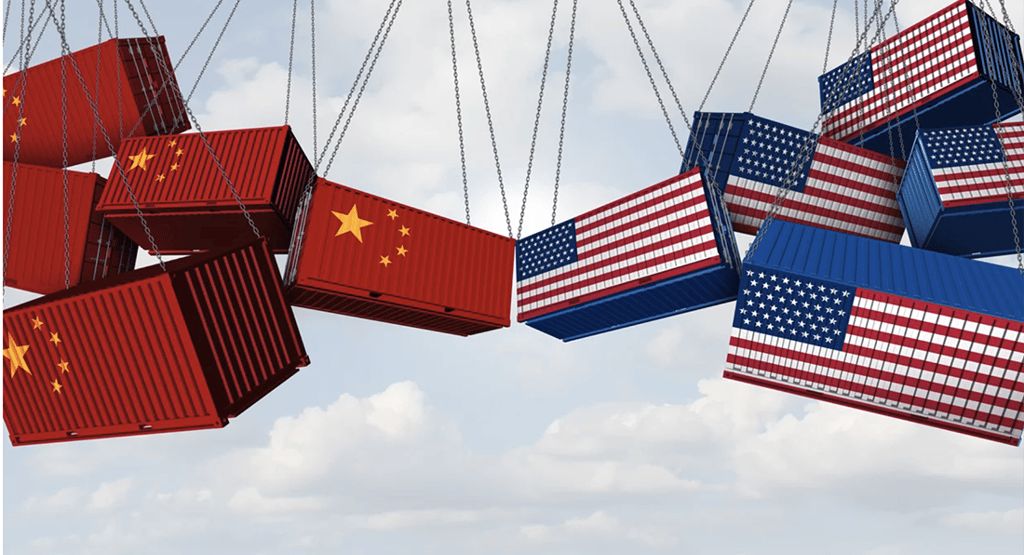Will Lowering U.S.-China Tariffs Actually Move the Needle? Experts Say Don’t Hold Your Breath
4/25/20254 min read


Will Lowering U.S.-China Tariffs Actually Move the Needle? Experts Say Don’t Hold Your Breath
The U.S.-China trade war has been a rollercoaster of escalating tariffs, heated rhetoric, and economic brinkmanship. Just when it seemed the two economic giants were locked in a stalemate, President Donald Trump dropped a bombshell: the U.S. might lower its sky-high tariffs on Chinese goods. But before you start celebrating a thaw in trade relations, experts are waving a caution flag, warning that the proposed cuts might be more symbolic than game-changing. Let’s unpack what’s happening, why it matters, and whether this could signal a turning point—or just more noise in an already chaotic trade saga.
The Tariff Tug-of-War: A Quick Recap
Earlier this month, the U.S. slapped a jaw-dropping 145% blanket tariff on Chinese goods, while China retaliated with a 125% rate on American products. These aren’t just numbers—they’re economic sledgehammers designed to choke off trade. For context, tariffs at this level make imported goods so expensive that businesses and consumers either look elsewhere or absorb crippling costs. The result? Disrupted supply chains, higher prices, and a whole lot of economic pain on both sides.
Enter President Trump, who, during a Tuesday news conference, hinted at a potential detente. “Tariffs will come down substantially,” he told reporters, though he was quick to add they wouldn’t vanish entirely. According to a Wall Street Journal report, the White House is mulling a reduction from 145% to a range of 50% to 65%. Sounds like progress, right? Not so fast.
Why Experts Are Skeptical
Eric Miller, president of Rideau Potomac Strategy Group and a seasoned international trade consultant, isn’t popping champagne over the news. “While the levels of tariffs coming down are welcome, they’re not going to be significant enough to get the vast majority of trade flowing again,” Miller said. His reasoning? A 50% or 65% tariff is still astronomical—think of it as swapping a punch to the face for a kick to the shin. It hurts less, but you’re still limping.
Miller’s point is stark: at 145%, tariffs are so prohibitive they’re essentially a trade embargo. Dropping to 50% or 65% doesn’t magically reopen the floodgates. “The current rates of 145% are no different than a 1,000% tariff,” he explained. “Both effectively shut off trade between the countries.” For businesses relying on affordable imports or exports, these numbers are still a death knell.
The Real-World Impact
Let’s break it down. High tariffs mean higher costs for companies importing goods, which often get passed on to consumers. That $50 gadget from China? With a 145% tariff, it’s suddenly a $122 purchase. Even at a “reduced” 65% tariff, it’s still $82.50—hardly a bargain. For industries like electronics, automotive, or retail, which lean heavily on Chinese manufacturing, these costs ripple through supply chains, inflating prices and squeezing profit margins.
On the flip side, China’s 125% tariffs on U.S. goods—like agricultural products, machinery, or energy—have hammered American exporters. Farmers in the Midwest, for example, have been reeling from lost markets as China turns to other suppliers. A slight tariff reduction might sound nice on paper, but it’s unlikely to convince Chinese buyers to switch back overnight.
What’s Driving the Tariff Talk?
So why is the White House floating this idea now? It could be a strategic pivot. Trump has long used tariffs as both a cudgel and a bargaining chip, aiming to pressure China into concessions on issues like intellectual property theft or market access. Signaling a tariff cut might be a way to ease tensions without fully backing down, especially as the U.S. economy grapples with inflation and supply chain woes.
Alternatively, it could be political theater. With midterm elections looming and economic concerns top of mind for voters, a headline about “lower tariffs” sounds like action, even if the impact is minimal. The administration gets to claim progress while keeping the tough-on-China stance that resonates with its base.
Can Trade Bounce Back?
For trade to truly rebound, tariffs would need to drop far lower—think single digits or, at most, 10-20%. That’s the range where businesses can realistically resume importing and exporting without breaking the bank. But getting there would require serious negotiations, and neither side seems eager to blink. China has its own domestic pressures, with President Xi Jinping facing economic headwinds and a need to project strength. A full-on trade truce feels like a long shot.
What’s Next?
The tariff saga is far from over. If the White House follows through on cuts, we’ll likely see a modest uptick in trade, but nothing close to pre-trade-war levels. Meanwhile, businesses and consumers will continue navigating a world of higher prices and fewer choices. The bigger question is whether this is a step toward de-escalation or just a brief pause before the next round of economic sparring.
As we wait for clarity, one thing is certain: the U.S.-China trade relationship remains a high-stakes chess game, with billions of dollars and millions of livelihoods hanging in the balance.
Thought Questions for Readers:
Do you think lowering tariffs to 50-65% will make a meaningful difference for consumers or businesses? Why or why not?
Should the U.S. prioritize reducing tariffs to boost trade, or maintain high tariffs to pressure China on other issues?
How have higher prices from tariffs affected your everyday purchases? Share your experiences in the comments!
Photo Credit: thefulcrum.us
hello@boncopia.com
+13286036419
© 2025. All rights reserved.